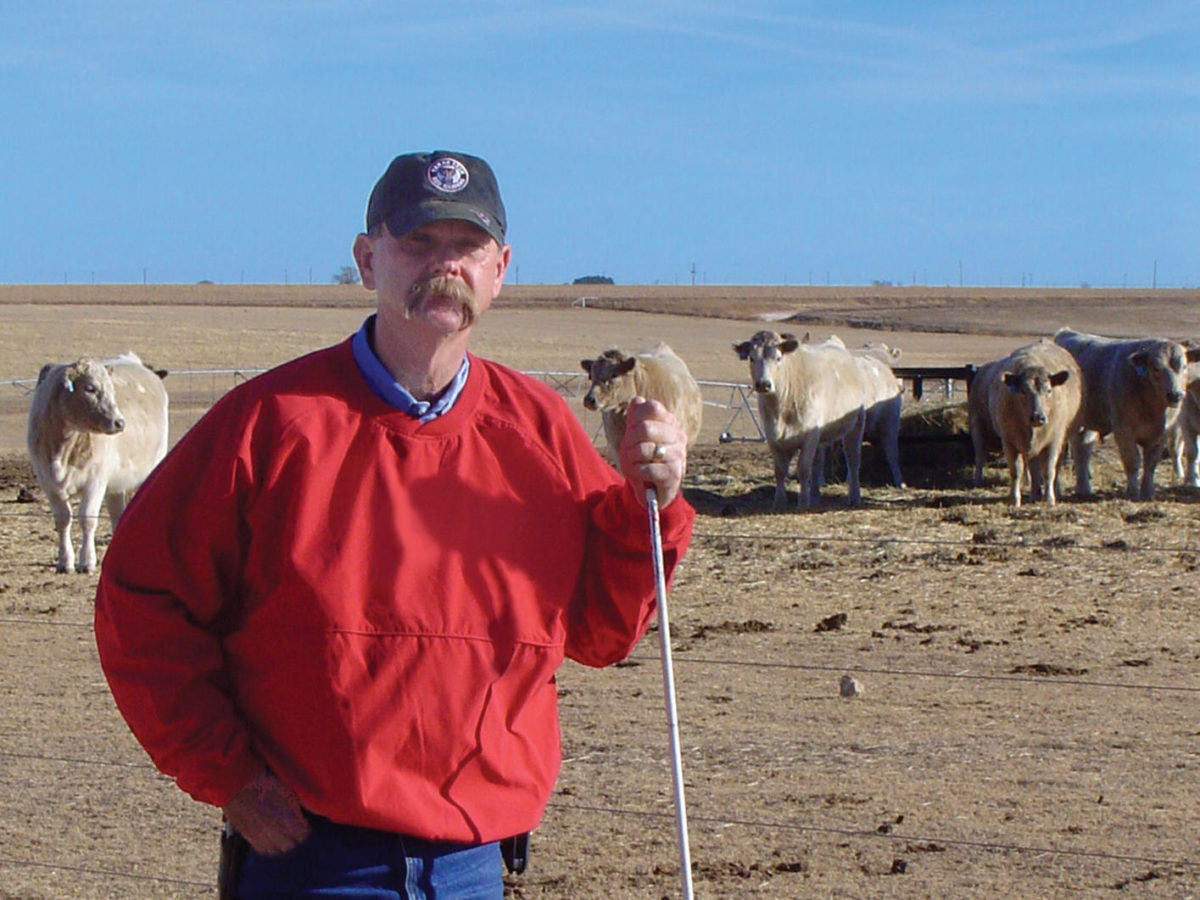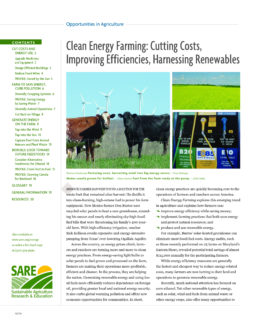On the Texas High Plains, livestock and crops are largely dependent on water from the Ogallala Aquifer. However, declining groundwater means more energy is required to pump water from ever-deeper levels. (See SARE’s video on the Ogallala Aquifer.)

When rancher Rick Kellison began farming his own 300 acres in the early 1990s, he set out not only to stay away from thirsty cotton, but to plant drought-tolerant grasses and forages and implement water-saving measures, all of which help him save energy.
“I’ve always been very concerned about what we’re doing with our water,” said Kellison, who runs his registered cow-calf operation in Lockney, about an hour north of Lubbock. Producers value water by what it costs to deliver it to the crop, he added, but water can be a finite resource, like oil and natural gas, and needs to be used carefully. Not long after Kellison purchased his land in 1995, he converted 210 of his acres from furrow irrigation to pivot and drip, and now saves more than 2,200 acre-inches of water, 89,966 kWh and $13,000 per year.
His permanent pastures also confer environmental and energy-saving benefits. One sowing per crop means no yearly planting or tilling, cutting fuel costs. Permanent pastures hold the soil in place, reducing erosion and building soil organic matter. Kellison fertilizes every year with approximately 75 pounds of nitrogen, 20 pounds of phosphorus and 15 pounds of sulfur for high-potash soils. But he is now experimenting with substituting alfalfa for energy-intensive nitrogen fertilizer. In his first year, he interseeded a 25/75 percent alfalfa/grass mix on 25 acres and was sufficiently pleased with the results that he plans to substitute alfalfa for nitrogen fertilizer on another 30 acres of pasture.
Kellison’s pastures, primarily drought-tolerant old-world bluestem with a little bit of Bermuda grass, are now less an anomaly in the Texas Panhandle than when he first began. The growing acceptance results partly from the research of SARE grant recipient Vivien Allen at Texas Tech. Together with Kellison and others, Allen has demonstrated how growers can reduce water and energy use, but maintain profitability by integrating drought-tolerant forages, grasses and livestock into traditional cotton and row crop systems.
Kellison is very positive about the influence of Allen’s work. “She’s had a tremendous impact on the number of acres. Many people who took some aspect of her research and incorporated it in their operations might not have if they hadn’t seen it work at Texas Tech,” said Kellison. “In this area, we’re starting to see people putting the land into improved perennial pastures.”
Kellison is project director of the Texas Alliance for Water Conservation (TAWC), a group of farmers, researchers and state and local agencies collaborating with Allen to develop strategies for reducing water use. “I feel like it’s my charge to leave the land in better shape than I found it. If I can accomplish that and be a good steward, then that’s a step in the right direction.”
